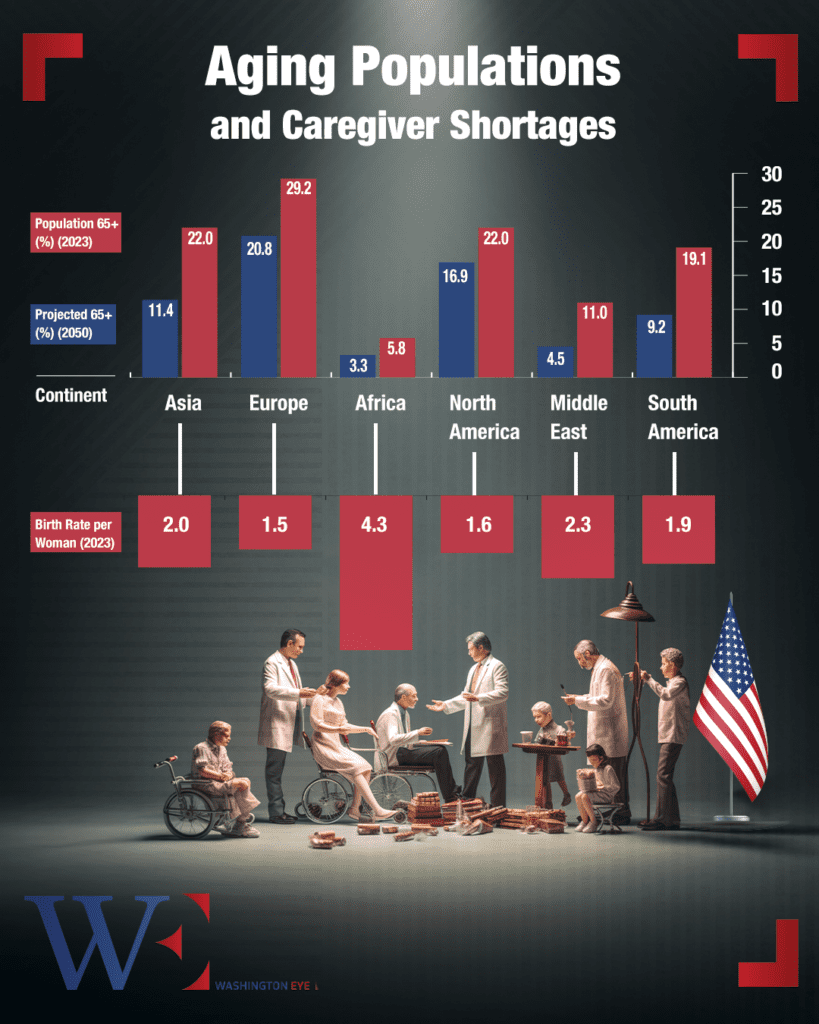According to the United Nations, the global population aged 65 and above is expected to double from 703 million in 2019 to 1.5 billion by 2050. This demographic shift is particularly pronounced in developed nations such as Japan, Germany, and Italy, where aging populations outpace younger generations due to declining birth rates.
In contrast, developing nations, though younger demographically, are also experiencing rapid increases in their elderly populations. “The decline in birth rates coupled with increasing life expectancy means fewer young people are entering the workforce, while a larger portion of the population requires care,” says Dr. Maria Tanaka, a sociologist specializing in aging societies. Traditional retirement ages, often set around 60 to 65, are becoming increasingly untenable. Many governments are raising the retirement age to ease the financial strain on pension systems. For example, France recently increased its retirement age from 62 to 64, sparking nationwide protests.
Longer working lives, while beneficial economically, pose challenges. “Not all individuals in their 60s or 70s are physically or mentally equipped to remain in the workforce,” explains Dr. Hugo Klein, an economist at the European Institute of Aging Studies. He adds, “This creates disparities between those who can afford to retire early and those forced to continue working.”
The Global Shortage of Caregivers
The shortage of caregivers is becoming critical. In the United States alone, the Bureau of Labor Statistics projects that by 2030, the country will need an additional 1.2 million home health and personal care aides. However, low wages and difficult working conditions deter many from entering the field. Japan remains one of the most affected countries, with nearly 30% of its population over the age of 65. To address this, it has embraced technological solutions such as robotic caregivers, though the human touch remains indispensable. “Technology can assist, but it cannot replace the empathy and connection that caregivers provide,” says Dr. Akiko Nakamura, a gerontologist in Tokyo.
In the Middle East, countries like Saudi Arabia and the UAE are starting to confront aging populations, albeit at a slower pace than Western nations. A traditionally younger demographic and reliance on extended family networks have mitigated the immediate impact. However, urbanization and changing family structures are beginning to strain these traditional caregiving models. “In the Gulf, the growing number of elderly individuals, coupled with a dependency on expatriate workers, presents unique challenges,” notes Dr. Faisal Al-Rahman, a sociologist specializing in Middle Eastern demographics. He emphasizes the need for sustainable eldercare policies that account for cultural and economic dynamics.

The responsibility for elder care often falls on family members, particularly women. According to a report by the International Labour Organization (ILO), over 70% of unpaid caregivers worldwide are women. Balancing work and caregiving responsibilities can lead to burnout and financial instability for these individuals. Countries with robust welfare systems, such as Sweden and Denmark, provide substantial support for elder care. However, even these nations face challenges in scaling up services to meet growing demand.
Issues and Strategies
Issues such as low wages make it difficult to attract professionals to caregiving roles, while the high physical and emotional toll of the job often leads to burnout among those already in the field. Additionally, an aging caregiver workforce reduces the availability of workers, compounding the problem. Limited training programs further exacerbate the situation by failing to equip sufficient numbers of qualified professionals to meet the rising demand. These interconnected challenges highlight the systemic nature of the caregiver shortage and the urgent need for comprehensive solutions.
Several strategies are being explored to mitigate the crisis. Immigration policies are being relaxed in countries like Germany and Canada to attract skilled caregivers from abroad. Robotics and AI, such as Japan’s robotic caregivers, can supplement human care but require significant investment. Raising wages and improving working conditions are crucial to making caregiving a more attractive profession.
Encouraging community-led initiatives, such as shared housing for the elderly, can reduce the burden on formal care systems. Providing tax breaks and subsidies for families caring for elderly relatives can alleviate financial pressures.
The aging population and caregiver shortage are not merely a healthcare issue but a societal one, demanding coordinated action. “This is not just about the elderly; it’s about creating a sustainable, equitable society for all generations,” says Dr. Anika Schröder, a public policy expert at Berlin’s Global Ageing Initiative. Governments, businesses, and communities must collaborate to create innovative and compassionate solutions. Failure to address this growing crisis could lead to economic stagnation, increased healthcare costs, and a diminished quality of life for millions.
















